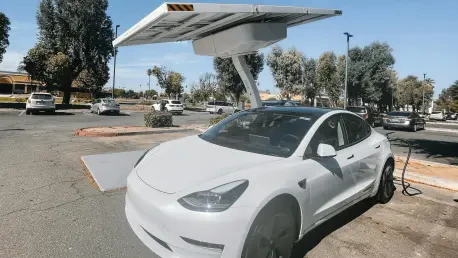
In a world increasingly dependent on technology, the sudden tightening of China's grip on rare earth elements has sent shockwaves through global markets, leaving nations like the United States scrambling for solutions to secure these vital resources essential for everything from electric vehicle

The push towards sustainable logistics in the UK is hitting a formidable barrier as the adoption of electric heavy goods vehicles (eHGVs) struggles to gain momentum, casting doubt on the nation’s ability to meet the Zero Emissions Vehicle (ZEV) mandate targets set for 2035 and 2040. With a deadline

Today, we're thrilled to sit down with Christopher Hailstone, a renowned expert in energy management, renewable energy, and electricity delivery. With his deep knowledge of grid reliability and security, Christopher offers unparalleled insights into the evolving landscape of energy storage systems.

In the rapidly evolving landscape of clean energy integration, a staggering 23.1 gigawatts of renewable projects sit in NV Energy's interconnection queue, reflecting a national push toward sustainable power that demands urgent attention. Yet, a recent decision by the Federal Energy Regulatory

In a world grappling with escalating environmental crises and energy demands, a groundbreaking class of materials known as metal-organic frameworks (MOFs) has emerged as a beacon of hope, offering innovative solutions that could reshape the future of chemistry and beyond. These remarkable

In an era where energy costs are soaring to unprecedented heights, particularly in regions like San Diego with some of the highest electricity rates in the nation, finding sustainable and affordable solutions has become a pressing concern for many homeowners. The burden of escalating utility bills